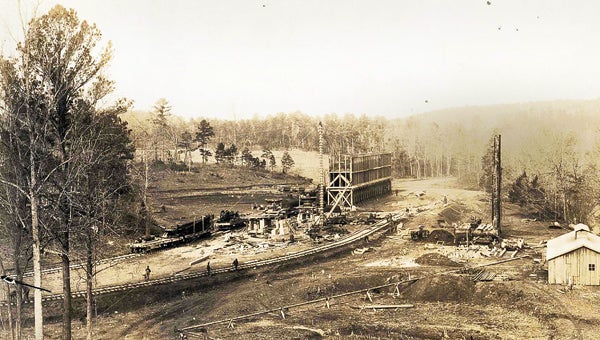New owners of “rock quarry” dig up 100-year history
Published 5:54 pm Friday, April 19, 2013
Littleton found that McArthur Brothers of New York were the major contractors for the dam project and advertised for jobs in New York City where many skilled workers lived.
Littleton said the labor force available in the Chilton County area at the time was very limited to farm labor types with a few carpenters and masons in the mix. No one was equipped to work on the dam construction, he said.
“The project needed people skilled in steam mechanics and piping, earth moving, heavy construction and quarrying,” Littleton said.
In the book “Putting Loafing Streams to Work” by Harvey H. Jackson III, he writes, “McArthur Brothers did what one would expect of such a firm—they turned to New York labor agencies, who recruited ‘foreign laborers’ to fill the breach. Brought from New York by sea to Savannah, Ga., and from there by rail and road to the site, these immigrants made up the bulk of the ‘common laborers’ first employed at the dam.”
He goes on to write, “for some reason however, they were ‘not satisfactory’ at that location so the imports were moved to the quarry, where they did ‘so much better that for a long time the quarry labor camp was almost exclusively of foreigners.’”
Alabama Power Company archives indicate there were three camps of workers located along the site made up of whites, blacks and Greeks.

A photo provided by Bill Tharpe with the Alabama Power Company Corporate Archives shows the area near the quarry where workers used crushed up rock to construct Lay Dam.
Maps of the site as well as written information show the camps were separated but the men all worked together at the site.
Records indicate a schoolhouse was erected for the white children of the camp and also used for religious gatherings. The black camp also had a church erected.
Another area of research Littleton has spent time compiling largely focuses on the railroad system at the site.
Littleton said the railroad track layout at the quarry had to be able to accomplish about three to four purposes.
“They had to move the blasted rock from the quarry to the crusher in skips loaded on flatcars and then get the emptied skips back to the quarry,” Littleton said. “Hopper cars had to be able to get to the big crushed stone storage bin to be loaded and moved to the dam. There was one rail spur that was just used to bring gin coal for the steam engines that ran the equipment and then we have been able to read the trains moved between the camps delivering supplies and the daily Italian bread allotment.”
Littleton has not been able to find a written account of names of workers at the site but it is apparent that when the work was finished most of them went back to their former homes.






